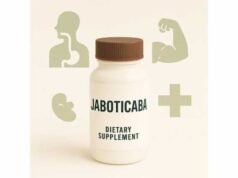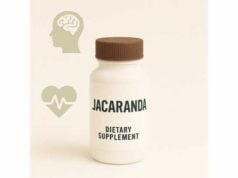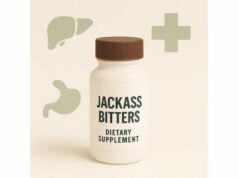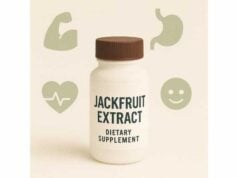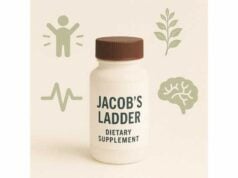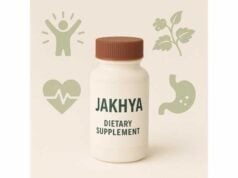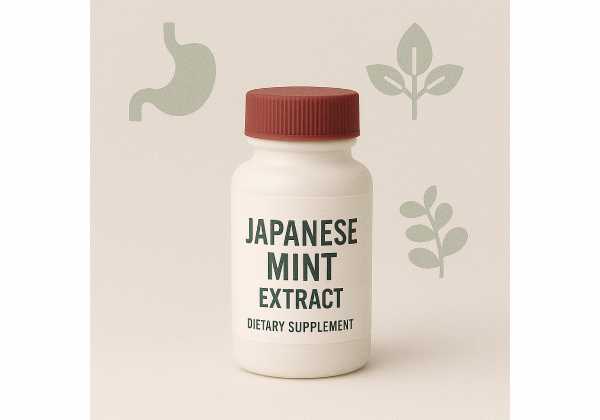
Japanese mint—most commonly referring to Mentha arvensis (also called corn mint or field mint) cultivated in Japan and East Asia—has a long record in food, fragrance, and traditional remedies. Its essential oil is one of the world’s richest natural sources of menthol, a cooling terpene responsible for mint’s signature feel. Beyond flavor, menthol interacts with cold-sensing receptors on the skin and in the gut, which helps explain why Japanese mint appears in topical rubs for sore muscles, inhaled blends for stuffy noses, and enteric-coated capsules for post-meal discomfort. This guide distills what matters for real-world use: how Japanese mint compares with other mints (like peppermint), which preparations make sense for digestion and comfort, how to dose teas, capsules, and topical oils, practical mistakes to avoid, and clear safety rules—especially for children and anyone taking prescription medicines. You will also find a product checklist and an evidence snapshot so you can run a simple, safe self-trial and decide whether Japanese mint earns a place in your routine.
Key Facts
- Menthol-rich Japanese mint may ease tension-type headaches (topical), reduce localized muscle discomfort, and support digestive comfort when used consistently for 2–8 weeks.
- Practical dosing: 1 cup (250 mL) tea brewed from 1.5–3 g dried leaf; enteric-coated oil 180–225 mg per capsule, taken 2–3 times daily; topical oil diluted to 1–5% menthol for spot application.
- Safety caveats: risk of skin irritation, reflux, and additive effects with certain medications; never apply mint oil to the face of infants or small children.
- Avoid if pregnant or breastfeeding, in children (unless a clinician advises), and before surgery or if you use anticoagulants, unless your clinician approves.
Table of Contents
- What is Japanese mint and how it works
- Does it work? Benefits you can expect
- How to use Japanese mint: teas, oils, and capsules
- How much Japanese mint to take per day
- Common mistakes and troubleshooting
- Side effects, interactions, and who should avoid it
What is Japanese mint and how it works
The plant and its oil. Japanese mint most often refers to Mentha arvensis grown and distilled in Japan and neighboring regions. The plant’s steam-distilled essential oil is exceptionally high in menthol and menthone. Commercial oils are often fractionated to crystallize menthol (used in balms, toothpastes, and confectionery) and then reconstituted to specific ratios for topical or oral products.
Active constituents you actually use:
- Menthol: activates the TRPM8 “cold” receptor on skin and mucosa, creating cooling and mild analgesic sensations; may reduce smooth muscle cramping in the gut.
- Menthone and isomenthone: contribute aroma and may modulate menthol’s effects.
- Minor terpenes (e.g., 1,8-cineole, limonene): add scent and subtle antimicrobial actions.
- Polyphenols (in the leaf, not the oil): provide antioxidant capacity in teas and culinary use.
Why menthol feels cool (and why that helps). Menthol doesn’t lower tissue temperature; it tricks cold receptors (TRPM8) to fire, which the brain reads as cooling. That sensory shift can distract from pain and, in some settings, reduce pain signaling. On the skin, menthol can also increase microcirculation, which explains the “cool then warm” sensation common to mint rubs.
Japanese mint vs. peppermint. Peppermint (Mentha × piperita) is a hybrid with its own oil profile. For most digestive and topical uses, menthol content matters more than species. Japanese mint oil is typically equal or higher in menthol than peppermint oil, which is why it’s favored for menthol extraction. For tea, flavor differs: Japanese mint is herbaceous and slightly earthy; peppermint is sweeter. If your goal is digestion or topical cooling, product quality and formulation matter more than choosing one mint over the other.
Forms you’ll see on shelves:
- Dried leaf (tea, culinary).
- Essential oil (pure or pre-diluted), including roll-ons, balms, and patches.
- Enteric-coated oil capsules (designed to release in the small intestine for gut comfort).
- Inhalation blends (diffuser or steam bowl; not for face or direct nasal application in children).
Bottom line: Japanese mint is a menthol-delivery plant. Pick the form that matches your goal—topical for localized aches and tension-type headaches, enteric-coated capsules for IBS-type belly discomfort, and tea for gentle daily use. Then keep the dose and recipe consistent long enough to judge effect.
Does it work? Benefits you can expect
Tension-type headaches and neck/shoulder tightness (topical). Menthol gels and balms can reduce pain intensity within minutes in tension-type headaches and repetitive-strain discomfort. The effect is local and short-acting—best used at the first hint of tightness, then reapplied as directed. People often report a cooling distraction, followed by looser neck and scalp muscles. For desk-heavy days, a pea-sized amount rubbed into the temples and suboccipital muscles is a practical routine.
Localized muscle and joint discomfort. After exercise or long workdays, small joints and trigger points often respond to spot application of menthol (typically 1–5% in gels or balms). Expect modest, noticeable relief, not deep anesthesia. Pairing with gentle movement—e.g., 5–10 minutes of mobility—tends to extend the benefit.
Functional digestive symptoms. Enteric-coated mint oil capsules (formulated to release in the small intestine) can help abdominal pain, bloating, and global IBS symptoms in some adults. Effects typically emerge over 2–4 weeks of steady use. People who benefit often notice a calmer post-meal feel and fewer crampy episodes. If you have frequent acid reflux, start low and take with food; uncoated oils or opening capsules can worsen heartburn.
Cold sensation and airflow perception. Inhaled mint feels like it opens the nose—even when airflow measurements are unchanged—because menthol stimulates cold receptors that the brain interprets as clearer breathing. This perceived relief can still be useful at bedtime or during colds, as long as you follow safety rules and avoid infant exposure.
Skin comfort and itch. Low-dose menthol can reduce itch perception on intact skin by altering sensory signaling. Many after-sun and antipruritic lotions use 0.1–1% menthol for that reason. Patch testing is sensible if you have reactive skin.
Who tends to benefit most:
- Adults with tension-type headache patterns, computer-neck tightness, or repetitive-strain aches.
- People with IBS-like cramping and bloating who can tolerate enteric-coated capsules and stick to a 2–8 week trial.
- Anyone who enjoys a tea-first approach for mild daily digestive support and breath freshness.
What not to expect. Japanese mint will not cure chronic disease, rapidly shrink inflammation in deep joints, or replace targeted medical care. Benefits are modest, task-specific, and reversible when you stop using it. For persistent or severe symptoms, coordinate with your clinician.
“Am I seeing real changes?” Three quick signals
- Headache days or rescue-medicine use drop over 2–4 weeks.
- Post-meal discomfort (pressure, cramps) scores trend down in a simple weekly log.
- Work endurance improves: you stretch less often for the same desk load, or evening mobility feels easier even on training days.
How to use Japanese mint: teas, oils, and capsules
1) Tea (dried leaf)
- What it’s best for: gentle digestive support, a fresh finish to meals, breath and throat comfort.
- How to brew: Add 1.5–3 g dried Japanese mint leaf to 250 mL (1 cup) hot water. Cover and steep 5–10 minutes, then strain.
- How often: Start with 1 cup after a main meal. If helpful and well tolerated, 1–3 cups/day is typical.
- Taste tips: Combine with ginger or lemon peel for warmth; avoid heavy sweetening if reflux is an issue.
2) Enteric-coated oil capsules (gut-targeted)
- What they’re best for: crampy IBS-type discomfort, bloating, gas.
- How to take: Common labels provide 180–225 mg oil per capsule. Take 1 capsule, 2–3 times daily, ideally 30–60 minutes before meals.
- When to reassess: Give it 2–4 weeks, then review a symptom log. If reflux appears, shift dosing with food or reduce to once daily and build up slowly.
3) Topical gels, balms, or roll-ons (localized pain/itch)
- What they’re best for: tension-type headaches, neck/shoulder tightness, minor muscle soreness, and itch on intact skin.
- How to apply: Choose products with menthol 1–5% for adults. Apply a thin layer to the target area up to 3–4 times daily unless the label says otherwise.
- Temple application: Avoid direct contact with eyes; wash hands after use.
- Patches: Menthol patches offer mess-free dosing for 2–8 hours; place on clean, dry skin and rotate sites.
4) Aromatic steam or diffuser (perceived nasal clarity)
- What it’s best for: temporary sense of openness during colds or allergies.
- How to use: Add 2–3 drops of essential oil to a bowl of hot water (not boiling), tent with a towel, and inhale gently for a few minutes. Do not use near infants or apply oil inside the nose.
5) DIY dilution (for advanced users only)
- Rule of thumb: Essential oils must be diluted in a carrier (e.g., jojoba, fractionated coconut). For adults, topical 0.5–3% menthol equivalents are typical for small areas.
- Why measure: Menthol can irritate or burn at higher strengths; precise dilution protects your skin.
Practical routines that work:
- Keep a roll-on at your desk for early tension signals.
- Use a capsule with largest meals if your main complaint is cramping and bloating.
- Brew an evening tea if you tend to snack after dinner; the ritual can curb late-night nibbling and freshen breath without sugar.
How much Japanese mint to take per day
Tea (dried leaf)
- Per cup: 1.5–3 g dried leaf in 250 mL water, steeped 5–10 minutes.
- Daily amount: 1–3 cups/day with or after meals.
- Gentle start: If you’re reflux-prone, begin at 1.5 g and keep steeps at ≤5 minutes.
Enteric-coated oil capsules
- Typical capsule: 180–225 mg oil.
- Starting plan: 1 capsule twice daily 30–60 minutes before meals for 3–4 days, then consider three times daily if needed and tolerated.
- Trial window: 2–8 weeks before you decide to continue or stop.
- Sensitive users: Take with food to reduce reflux risk.
Topical menthol products
- Strength: 1–5% menthol for adults on small areas (temples, neck, shoulders).
- Frequency: Up to 3–4 applications/day per label, with 8+ hours between patch changes.
- Upper limit: Do not combine multiple high-menthol products on the same area (e.g., patch plus gel plus liniment).
Essential oil (DIY dilution for adults only)
- Spot relief: Aim for 0.5–3% menthol equivalent in carrier oil. As a rough guide, 3–6 drops essential oil in 10 mL carrier approximates ~1–2% depending on the oil’s menthol content.
- Test first: Do a patch test on the inner forearm for 24 hours to check for irritation.
Special situations
- Headache pattern: Apply a pea-sized amount of a 2–3% menthol gel to the temples and upper neck at first symptoms; repeat every few hours if needed.
- IBS-like discomfort: Keep dosing consistent and log pain, bloating, and stool form weekly to judge effect at week 4 and week 8.
- Athletic recovery: Use menthol gel post-session for cooling relief, then perform 10 minutes of light mobility to extend the benefit.
What not to do
- Do not ingest undiluted essential oil.
- Do not exceed label directions to “force” a result—more menthol often equals more irritation.
- Do not apply mint oil to broken skin, mucous membranes, or the face of infants or young children.
Common mistakes and troubleshooting
“The rub burned my skin.”
- Likely cause: High menthol percentage or applying right after a hot shower.
- Fix: Step down to 1–2% menthol, apply to cool, dry skin, and add a thin barrier of neutral lotion first if needed.
“Capsules made my reflux worse.”
- Likely cause: Taking enteric-coated oil on an empty stomach or using a non-enteric oil.
- Fix: Switch to enteric-coated if not already; take with food; reduce to once daily and titrate carefully.
“Tea is not helping my cramps.”
- Likely cause: Tea delivers less menthol than enteric-coated oil and may not reach the small intestine intact.
- Fix: If appropriate, trial enteric-coated capsules for 4–8 weeks.
“My headache relief is too brief.”
- Likely cause: Sparse application timing or very low menthol percentage.
- Fix: Apply at first sign of tightness; consider a 2–3% menthol product and pair with neck mobility and hydration.
“The scent is overwhelming at work.”
- Fix: Use a low-odor gel or patch, apply sparingly, and wash hands thoroughly. Consider roll-ons for precise dosing.
“I react to many skincare products—can I try mint topicals?”
- Fix: Patch test a 0.5–1% menthol lotion on a 2–3 cm area of forearm for 24 hours. If irritation occurs, avoid topicals and consider tea instead.
How to judge if it’s worth keeping (8-week check)
- Headache days or rescue painkiller use decreased.
- Meal-related discomfort ratings fell by ≥2 points on your 0–10 scale.
- Exercise recovery feels smoother with fewer end-of-day hotspots.
If none of these moved, discontinue and refocus on posture, stress management, sleep, and targeted medical care as appropriate.
Side effects, interactions, and who should avoid it
Common, usually mild side effects
- Skin: cooling burn, redness, or rash—most often from high-strength products or repeated reapplication.
- Digestive: heartburn, belching, or nausea from oil capsules; tea is typically gentler.
- Respiratory: strong vapors can trigger cough or throat scratchiness in sensitive users.
Serious but rare concerns
- Infants and young children: Never apply mint oil to the face or near the nostrils; menthol vapors can affect breathing.
- Accidental ingestion of undiluted oil: can be dangerous; store oils safely.
- Allergy: hives, swelling, or wheeze—stop use and seek care.
Drug and disease interactions
- Gastroesophageal reflux disease (GERD): mint oils can relax the lower esophageal sphincter; prefer tea or non-mint strategies if reflux worsens.
- Gallbladder issues or biliary obstruction: peppermint-family oils may aggravate symptoms—avoid or use only with clinician guidance.
- Antacids and enteric coating: taking antacids at the same time can dissolve coatings prematurely, increasing reflux risk—separate by several hours.
- Anticoagulants/antiplatelets and multiple topicals: menthol itself is not a blood thinner, but mint oils can enhance skin penetration of some drugs and increase local irritation; keep regimens simple and consistent, inform your clinician, and avoid applying mint gels over medicated patches unless directed.
- Multiple menthol products: stacking gels, patches, and liniments on the same area increases irritation risk without extra benefit.
Who should avoid Japanese mint unless a clinician approves
- Pregnant or breastfeeding individuals.
- Children and adolescents (topical face exposure is specifically contraindicated in infants/young children).
- People with active GERD, peptic ulcer flare, gallbladder disease, or severe liver disease.
- Anyone scheduled for surgery or endoscopy—pause nonessential botanicals 1–2 weeks prior per your care team.
- Adults with multiple prescription medicines—especially if skin patches are involved or if you take medicines with narrow therapeutic windows.
Safety checklist
- Use enteric-coated capsules for gut symptoms; avoid non-coated oils if reflux-prone.
- Keep topical menthol ≤5% on small areas; wash hands after use and avoid eyes.
- Do not ingest essential oil directly; do not use on infants’ or toddlers’ faces.
- Start low, go slow, and keep a simple symptom log.
- If you notice chest burning, new wheezing, severe rash, black stools, persistent vomiting, or fainting—stop and seek medical care.
References
- Peppermint Oil (2025)
- Systematic review and meta-analysis: efficacy of peppermint oil in irritable bowel syndrome (2022) (Systematic Review)
- The distinctive role of menthol in pain and analgesia (2022) (Review)
- Mentha arvensis Essential Oil Exerts Anti-Inflammatory Activity via NF-κB and MAPK Signaling Pathway in RAW 264.7 and HaCaT Cells and Alleviates Inflammation in DNCB-Induced Atopic Dermatitis Model (2021)
- Review article: the physiologic effects and safety of peppermint oil and its efficacy in irritable bowel syndrome and other functional disorders (2018)
Disclaimer
This guide is educational and is not a substitute for professional medical advice, diagnosis, or treatment. Always consult a qualified clinician before starting, stopping, or combining Japanese mint products—especially if you are pregnant or breastfeeding, have reflux, gallbladder, liver, or respiratory conditions, take prescription medicines, or are preparing for surgery. Do not apply mint oil to the face of infants or young children. If you experience severe rash, breathing trouble, chest burning, or signs of an allergic reaction, stop use and seek medical care.
If you found this article useful, please consider sharing it on Facebook, X (formerly Twitter), or your preferred platform, and follow us for more evidence-based wellness content. Your support helps us continue creating high-quality guides.

